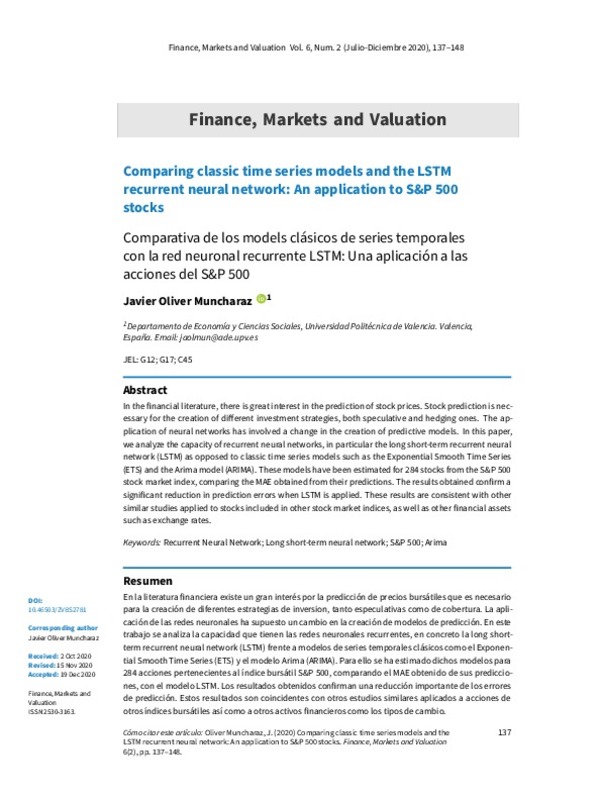JavaScript is disabled for your browser. Some features of this site may not work without it.
Buscar en RiuNet
Listar
Mi cuenta
Estadísticas
Ayuda RiuNet
Admin. UPV
Comparing classic time series models and the LSTM recurrent neural network: An application to S&P 500 stocks
Mostrar el registro completo del ítem
Oliver-Muncharaz, J. (2020). Comparing classic time series models and the LSTM recurrent neural network: An application to S&P 500 stocks. Finance, Markets and Valuation. 6(2):137-148. https://doi.org/10.46503/ZVBS2781
Por favor, use este identificador para citar o enlazar este ítem: http://hdl.handle.net/10251/168037
Ficheros en el ítem
Metadatos del ítem
| Título: | Comparing classic time series models and the LSTM recurrent neural network: An application to S&P 500 stocks | |
| Otro titulo: |
|
|
| Autor: | ||
| Entidad UPV: |
|
|
| Fecha difusión: |
|
|
| Resumen: |
[EN] In the financial literature, there is great interest in the prediction of stock prices. Stock prediction is necessary for the creation of di erent investment strategies, both speculative and hedging ones. The application ...[+]
[ES] En la literatura financiera existe un gran interés por la predicción de precios bursátiles que es necesario
para la creación de diferentes estrategias de inversion, tanto especulativas como de cobertura. La aplicación ...[+]
|
|
| Palabras clave: |
|
|
| Derechos de uso: | Reconocimiento (by) | |
| Fuente: |
|
|
| DOI: |
|
|
| Editorial: |
|
|
| Versión del editor: | https://doi.org/10.46503/ZVBS2781 | |
| Tipo: |
|









